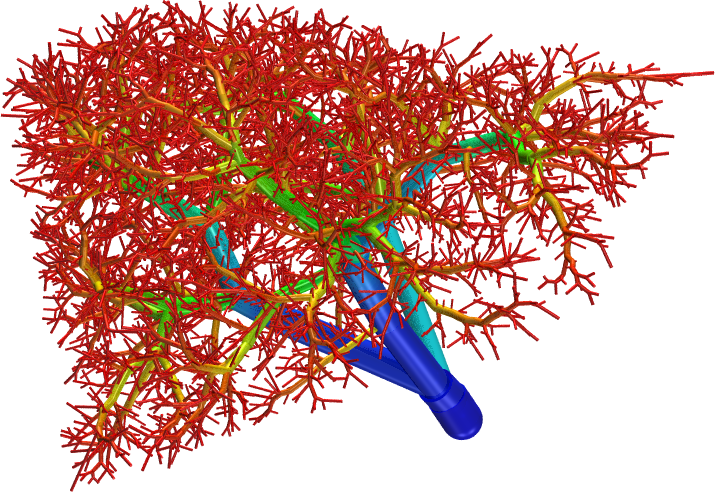Major 3D Printed Organ Breakthrough: Vascular Networks Achieved
Bio-printing promises to change the way the medical community deals with organ failure. Every year hundreds of thousands of people die because they could not receive an organ transplant soon enough. The demand for  donor organs far exceeds the supply, leaving helpless patients in a state that no one should have to be left in… waiting to live.
donor organs far exceeds the supply, leaving helpless patients in a state that no one should have to be left in… waiting to live.
We have already seen 3D printing create several types of human tissue, most notably liver tissue which is currently being used in drug toxicity testing. With that said, there is still one major hurdle to get us from the tiny sheets of 3D printed organ tissue, to that of entire 3D printed organs, which could one day be created by a patient’s own stem cells, and transplanted to save their life. That hurdle is the vascularisation of those organs. Every cell within a human organ, such as the liver, kidney or heart are within a hair’s width of a blood supply. This is an incredibly complex setup, one which up until now, researchers have found to be a nightmare to overcome when dealing with bioprinting. Without an adequate vascular network, the cells would be starved of oxygen, as well as a means to excrete waste, causing them to die and making the printed organs worthless.
Scientists from the Universities of Sydney, Harvard, Stanford and MIT have been working together to overcome these mountainous hurdles. Today, the University of Sydney made a groundbreaking announcement. The team of scientists from all four universities have figured out a technique, making such vascularisation possible within the 3D bioprinting process.
To achieve this, the researchers used an extremely advanced bioprinter to fabricate tiny fibers, all interconnected, which would represent the complex vascular structure of an organ. They coated the fibers with human  endothelial cells, and then covered it with a protein based material, rich in cells. The cell infused material was then hardened with the application of light. Once hardened the researchers carefully removed the coated fibers, leaving behind an intricate network of tiny spaces throughout the hardened cell material. The human endothelial cells were left behind, along the tiny spaces created by the fibers, which after a week self organized into stable capillaries.
endothelial cells, and then covered it with a protein based material, rich in cells. The cell infused material was then hardened with the application of light. Once hardened the researchers carefully removed the coated fibers, leaving behind an intricate network of tiny spaces throughout the hardened cell material. The human endothelial cells were left behind, along the tiny spaces created by the fibers, which after a week self organized into stable capillaries.
“While recreating little parts of tissues in the lab is something that we have already been able to do, the possibility of printing three-dimensional tissues with functional blood capillaries in the blink of an eye is a game changer,” said study lead author and University of Sydney researcher, Dr Luiz Bertassoni. “Of course, simplified regenerative materials have long been available, but true regeneration of complex and functional organs is what doctors really want and patients really need, and this is the objective of our work.”
The discovery of this technique should hopefully quicken the pace of bio-printing research, and lead to a time, in the not too distant future, when we can meet the demand of the growing need for organs transplants. We are still likely several years from such a time, but progress is certainly being made quite rapidly.
What do you think this technique means for the 3D printing of entire human organs? Let us know your opinion in the 3D printing organ forum thread at 3DPB.com.
[Source: University of Sydney]Subscribe to Our Email Newsletter
Stay up-to-date on all the latest news from the 3D printing industry and receive information and offers from third party vendors.
Print Services
You May Also Like
New Business: Temporary, Migratory, & Modular 3D Printed Architecture
If we look at potentially emerging 3D printing businesses, then architecture has not been fully explored. Yes, there is a lot of house 3D printing going on worldwide. From deployable...
3D Printing News Briefs, April 19, 2025: Material Extrusion Standard, Metal Powder, & More
In today’s 3D Printing News Briefs, we’re covering a proposed standard for material extrusion, before moving on to business and metal powder. We’ll end with a commercial store’s robotic 3D...
Japan Unveils World’s First 3D Printed Train Station
Japan is now home to what we believe is the world’s first train station built with 3D printing technology. Located in Arida City, just south of Osaka, the new Hatsushima...
restor3d Raises $38M to Expand 3D Printed Orthopedic Implants
Backed by $38 million in new funding, restor3d is pushing ahead with the launch of four personalized implant lines, set to roll out in 2025 and 2026. This latest venture...



























